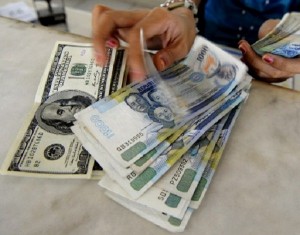Higher growth trend seen for PH

The global investment bank said the local currency could strengthen to 37.50 against the US dollar in the next 12 months.
Over the medium-term, or through 2016, the Philippines can grow its gross domestic product by 5.5 to 6 percent a year as the Singapore unit of the investment bank maintains a rosy outlook for Southeast Asia, said Mark Tan, a Goldman Sachs economist for the region.
“It’s a very interesting time to be here. There’s immense interest on the Philippines in the last 12 to 18 months—more so than I can remember over the last 10 years that I’ve been involved in Philippine research,” Tan said in a press briefing.
He said Asean’s growth path was brought on by several factors: Strong credit acceleration which, in turn, supported domestic demand; improved global demand; the top-down infrastructure programs of various governments; and the “relatively loose” monetary policy that supported investment and consumption growth.
The medium-term growth trend projected by Goldman Sachs is better than the 4.9-percent annual growth seen during the nine-year Arroyo administration, but is lower than the Aquino government’s fighting target of 7 to 8 percent.
To attain a growth rate of 8 percent, Tan said the present government would have to step up its infrastructure programs. Growth is driven by factors such as labor productivity, accumulation of physical capital, and how these two factors—labor and capital—are utilized to produce economies of scale, he explained.
“These are the areas the government needs to focus on,” Tan said.
Apart from boosting physical capital, he added, the government must also turn its energies to upgrade skills, move up the value-added chain and invest in human capital.
Tan noted how some investors in developed markets were somewhat disappointed in the slow pace of infrastructure rollout in the Philippines.
“But compared to its peers, I won’t say the Philippines is doing any worse,” he said, explaining that investors expected things to improve and this, in turn, would enable the Philippine economy to outperform other markets.
Still, he said, Goldman Sachs’ portfolio strategists maintained an “underweight” rating on Philippine equities due to valuation concerns.
“It’s now one of the most expensive markets in the region,” Tan said.
Also, he said, Goldman Sachs derives its strong peso outlook from the expected growth in overseas remittances and investment flows.
Monetary authorities in the region, including those from the Philippines, will likely become more tolerant of a stronger local currency if this is driven by fundamentals, for instance stronger trade and investment flows, Tan said.